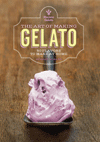Jazz it Up at IFT
Attendees of the 2005 IFT Annual Meeting + Food Expo® will want to avoid New Orleans' famous party bazaar on Bourbon Street, as the show's jam-packed technical program and trend-setting exhibition floor will require a clear mind and rested body. Indeed, this year's show will provide food formulators with the tools to develop foods for today and tomorrow's consumers.
Approximately 20,000 food scientists, technologists, suppliers, marketers and others from around the world will attend this year's show, which, with pre- and post- events, runs almost a full week. Attendees are attracted by the promise of encountering the driving forces behind the latest innovations and information affecting consumers, growers, processors, regulators and researchers who help make the U.S. food supply the most diverse of any in the world.
At the annual meeting, answers to the food challenges of today are revealed while the trials of tomorrow are predicted. One-thousand experts will provide their insight in more than 100 technical sessions over a wide range of topics from food safety to new processing methods to the nutritional aspects of new food products.
Pre-meeting continuing education programs begin on Friday, July 15. There are eight two-day programs and two single-day programs. Program topics include "Ingredients and Applications for the Development of Products Promoting Health and Wellness" (program 1), "Bringing Functional Foods to the Consumer: From Concept to Market" (program 3) and Tools and Techniques for Innovative Product Design (program 8).
The annual meeting officially commences on Saturday, July 16, at 5:30pm, when IFT honors individuals for their achievements in food science at the awards ceremony. The celebration is followed by a welcome reception. Everyone is invited for a taste of New Orleans-style food and entertainment.
Then it's early to bed and early to rise, as the annual meeting starts up again on Sunday morning at 9:00am with Keynote Speaker Malcolm Gladwell, who will transform your thinking on communication, decision making and the management of trends and change. He has the uncanny ability to interpret groundbreaking research and apply it to the business arena.
In his bestseller The Tipping Point, Malcolm provided organizations with new tools for understanding trends. The book has been on bestseller lists for three years. His next release, Blink: The Power of Thinking Without Thinking, analyzes intuition-how we know what we know, instinctively-and explores how we can improve our instincts for good decision making.
The technical sessions begin on Sunday afternoon. Dairy Foods has reviewed the annual meeting program and has identified numerous sessions that are relevant to dairy foods product development (see accompanying table).
A special hot topics series entitled "Building Consumer Trust" kicks off on Monday, July 18 (9:00am) with: Top Five Fear Factors. This session will explore a variety of fears affecting the food industry and its businesses. Small details, which if overlooked or improperly handled, could cause you to close your doors permanently.
This session will help you answer questions such as what is the one thing that could cause your company to go out of business and what can you do to prevent it? Discussions will include the volatile costs of commodities, including natural gas, and if these costs can price your products out of the market.
Other fear factors addressed include product recalls and how to handle them; and the growing threat of bioterrorism and what U.S. companies are doing to protect the integrity of the world's food supply. Speakers will present case history examples of what could go wrong, as well as steps your company can take to protect itself.
On Tuesday, July 19 (9:00am), the fear factors session is followed up with: Food Science to the Rescue. This session will explore ways to establish a dialogue between the food science and public health communities. The potential of food science to provide food-based solutions to obesity and other health concerns will serve as an example of how its capabilities can be understood and leveraged among public health stakeholders. A panel discussion with representatives from academia, government and industry will identify strategies to communicate and apply the capabilities of food science to improve public health.

Questions to be addressed include how can the food industry contribute to shaping the message from the homogeneous, simplistic avoidance of carbohydrates to a more realistic, heterogeneous representation in which some food choices are health enhancing, while some are purely indulgences? How will the consuming public respond to an evolving carbohydrate message? Understanding the implications of and employing glycemic strategies in food products may provide sustainable opportunities for the food industry. These issues will be addressed by an expert panel that will explore the modification of carbohydrate-based ingredients, the physiology and science behind the glycemic concept, testing methods, and the changing landscape that manufacturers and consumers are currently navigating.
A forum on Tuesday afternoon (2:30) also promises to be of interest to dairy processors, particularly those in the cheese industry. Entitled "Science of sodium and challenges to industry," this session is preparing the food industry for what is expected by many to be the next nutrient to be scrutinized-sodium.
American consumers have long been advised by governmental and some professional organizations to moderate sodium intake in order to improve blood pressure. The establishment of Adequate Intake (1,500mg/day) and Upper Level (2,300mg/day) benchmarks for sodium by the Institute of Medicine that are lower than the current Daily Reference Value (2,400mg/day) used for nutrition labeling is placing increased emphasis on these recommendations. Processed foods and cheese are the most significant sources of sodium in the U.S. diet, and the public health community has challenged food manufacturers to provide more reduced-sodium products and to lower the salt content of the general food supply.
Unfortunately, sodium chloride is critical to the palatability of many foods and acceptable salt substitutes are not yet available for many applications. Therefore, consumer demand for lower sodium foods is often insufficient to sustain their presence in the marketplace. In addition, sodium often contributes functional attributes (e.g. texture, microbiological safety) to foods that are difficult to duplicate with other ingredients. This forum will present the latest science of sodium and discuss the best evidence on the importance of salt in health and disease. In addition, salt taste and food preference will be covered and will include physiology of salt taste and the functions of salt in food.
Earlier on Tuesday (9:00am), food industry leaders will discuss how manufacturers are adapting product development strategies to address the 2005 Dietary Guidelines for Americans, and helping Americans identify foods and beverages that complement MyPyramid. Discussants will delve into the challenges of reformulating and processing foods with less sodium, for example, while delivering safe, nutritious and appetizing foods for palates of Americans who are increasingly focused on wellness through food. This event is a first for the annual meeting, and one that will likely attract a huge number of attendees.

Expo floor highlights
The exposition floor will be home to approximately 800 exhibitors presenting their latest innovations designed to make food more fun, functional, nutritious, appealing and accessible to all. (See page 48 for highlights on some key dairy industry suppliers.)Along with exhibitor booths, the exposition will have a variety of special events. For example, the Healthy Food Ingredients Pavilion will provide attendees with the chance to talk with suppliers of a vast array of nutraceuticals, functional foods, organic foods and natural foods. Indeed, consumer desire for health and wellness foods and beverages is not going away. In fact, the popularity of such products is growing at a rapid rate. As the market for healthy food ingredients also booms, developers will not want to miss this exhibit as it is sure to generate ideas for new and dynamic products.
Speaking of new products, New Product Showcase Presentations will take place right on the exposition floor. Educational forums will focus on global new food product trends, emerging flavor trends and overall taste trends. Presentations will include samples and tastings of many products discussed. There will be an overall focus on health and wellness formulations and the marketing of these products.
Another stop on every attendees list should be the IFT/Research Chefs Association (RCA) Product Development Pavilion. This unique, interactive pavilion will feature collaborative presentations combining the culinary innovations of research chefs from RCA with food scientists from IFT. Top chefs from diverse market segments will work side-by-side with food technologists to create innovative products for all retail and restaurant/foodservice markets, ranging from retail through quick-service and fine dining. Each product will be accompanied by the recipe and a discussion of development steps.
The expo floor closes on Tuesday afternoon; however, the educational opportunities do not stop. On Wednesday, a special, full-day conference is scheduled to address the "Challenges to International Trade." The conference provides a forum for the world's leading experts from industry, academia and government to focus on food safety and quality with special emphasis on global food production.
With such a packed week, not to mention the anticipated high temperatures and humidity levels, it will likely be easy to keep you inside the Morial Convention Center. But if you must escape to take in some of the sights and experiences of New Orleans, you will not be disappointed. Like the IFT show, there is a lot to see and a lot to do.
Sidebars: IFT Food Expo Hours
Sunday, July 17, 11:00am to 5:30pm • Monday, July 18, 11:00am to 5:30pm • Tuesday, July 19, 11:00am to 5:30pm
Must-attend IFT Sessions for Dairy Foods Manufacturers
3 Innovations in nutritional ingredients and food processing
4 Emerging challenges in consumer-driven R&D
16 UF milk and UF milk ingredients in food products
20 Building consumer trust: Top fear factors in 2005
21 Innovations in functional ingredients
22 2005 Dietary Guidelines for Americans: The science
23 Accelerated new product development: Speed to market, doing more with less
25 Enhancing product development success by combining food science and culinary arts
30 Whey proteins in foods: Past, present and future
31 Dairy foods (academia oral)
38 2005 Dietary Guidelines for Americans: What consumers and food product developers tell us
47 Sensory analysis of texture in dairy products
48 The marketing function: Why should I care?
F3 The glycemic concept: The next wave in nutrition?
66 The fiber conundrum: Fiber requirements and the new fiber definitions
71A Dairy foods (academia posters)
80 Science and food technology promote better tasting, healthy foods: The truth to sodium reduction
F5 Science of sodium and challenges to industry
102 Childhood obesity
107 Dairy foods (academia oral)
Looking for a reprint of this article?
From high-res PDFs to custom plaques, order your copy today!






